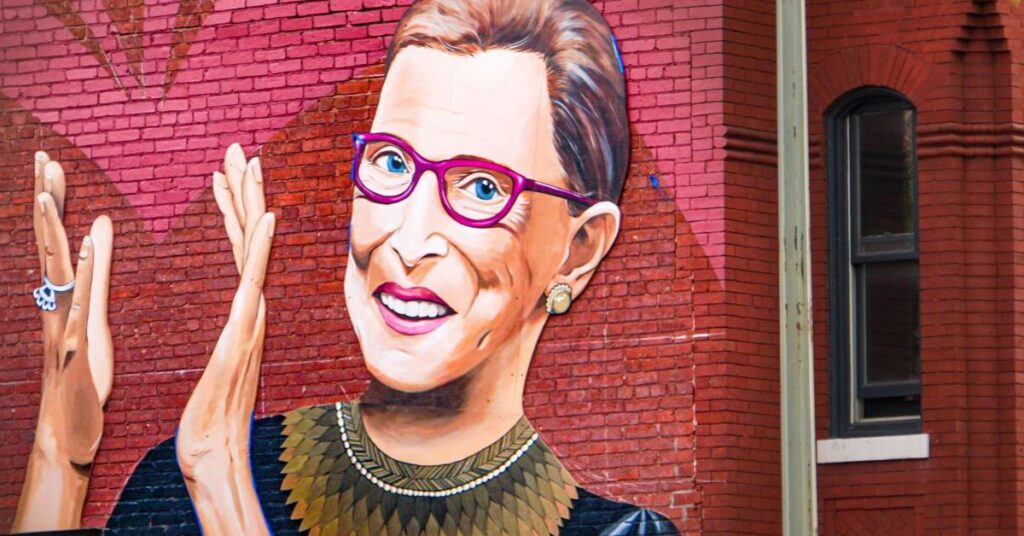
Xiadani Flores. Peninsula 360 Press [P360P].
On September 18, 2020, at the age of 87, Joan Ruth Bader Ginsburg, a great liberal justice, passed away. She was the second woman to serve as a justice on the Supreme Court of the United States, an icon of progressive thought and a great reference in the U.S. legal system.
Throughout her political career, Bader Ginsburg became an icon of freedom, an unattainable fighter for equality, books have been written about her, and biographical films have been made about her life.
It is possible to find her face on t-shirts, on mugs and there are even people who have tattoos of her. But who was this woman who took such revolutionary ideas as the legalization of abortion to the Supreme Court?
Joan Ruth Bader Gingsburg was born in Brooklyn in 1933 into a middle class family of Jewish immigrant parents, she grew up in the era of the Holocaust and this would leave an important mark on her thinking. She studied at Cornell University where she met Martin Ginsburg, who would become her husband and the father of her daughter Jane.
Bader Gingsburg was one of only nine women out of 500 men to enroll in law school, and to top it off, she faced the grueling experience of raising a daughter while in school.
The experiences she faced during this stage of her life, from being discriminated against at work for being pregnant and having to hide her pregnancy, to being discriminated against by the head of Harvard Law School, made Bader Gingsburg a fierce advocate for women's rights.
She eventually transferred to Columbia University and graduated in 1959 with the highest grade point average; however, she had trouble finding a job because most New York law firms would not hire women. Again, she found that being a woman imposed certain hurdles that she would not have had to overcome if she had been a man.
Faced with this situation and with the need to practice her profession, she began working in the office of a judge as his assistant. Later she was an assistant professor at Rutgers Law School, during this period she became pregnant with her second son, James, and fearing that her contract would be cancelled because of this situation, she found it necessary to wear bigger clothes.
In 1953, while working at Rutgers, Bader Gingsburg noticed that she was being paid less than her fellow teachers, which prompted her to file a lawsuit and was instrumental in raising her salary and that of her colleagues.
In her fight for women's equality, she made achievements that marked her professional career forever, becoming the first female academic with a permanent position at Columbia University.
In 1972 she founded the Women's Rights Project before the American Civil Liberties Union, with which she litigated cases of gender discrimination and unconstitutionality.
One of the best known cases involved a pregnant U.S. Air Force officer who was required to have an abortion in order to keep her job, Bader Gingsburg, who was empathetic to the situation, litigated on her behalf. She won five of six cases that were brought before the U.S. Supreme Court.
In 1933 President Bill Clinton nominated her as a Supreme Court Justice and she was confirmed by the Senate. She suffered from cancer twice, but this did not diminish her fight, on the contrary, she defended just causes until the end.
We remember her with two films inspired by her life: the documentary film The Judge (RBG) (2018)
and The voice of equality (2018) directed by Mimi Leder and Felicity Jones as lead actress.


